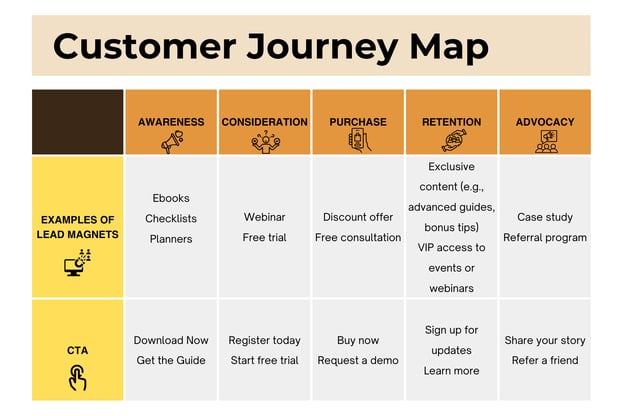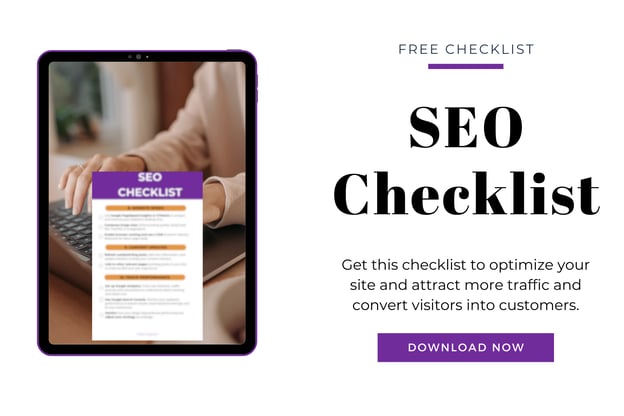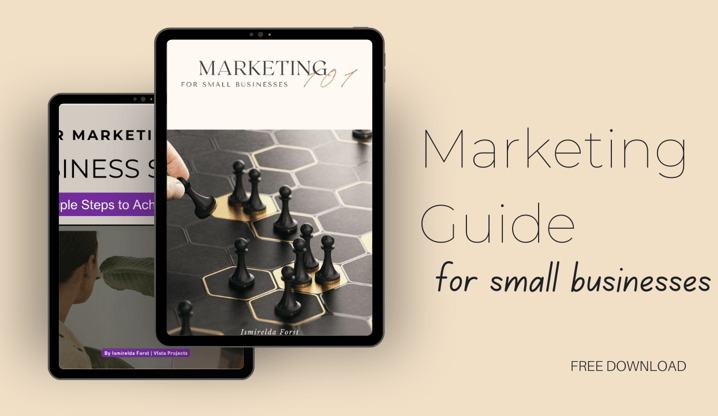How to Create a Content Plan That Attracts Leads for Your Online Business
Ismirelda Forst
4/22/202510 min read
How to create a content plan in short:
Content marketing is a great strategy for attracting leads to your business. Through valuable and relevant content creation, you can engage potential customers, build trust, and guide them through their journey to making a purchase. To effectively attract leads, start by defining clear goals for your content, choosing the right content formats (like blog posts, videos, or social media), and optimizing it for SEO to increase visibility. Don’t forget to use lead magnets such as ebooks, webinars, or free trials, along with clear calls-to-action (CTAs) to encourage users to take the next step.


If you're running an online business, you’ve probably heard all about what content marketing can do. But did you know that 83% of businesses see positive results in demand generation when they have a solid content marketing strategy? The right content plan can go a long way in attracting leads and growing your business.
Without a clear content plan, it’s easy to get lost in the noise of social media and other platforms. Doing content planning right can solve a lot of your problems since it targets the right audience and includes more than just posting often. Your content plan also helps you build trust and position yourself as an authority in your space over time.
If you're ready to learn how to create a content plan that drives results, let’s get started! This step-by-step guide is perfect if you’re looking to increase visibility, build trust, or drive sales for your online business with content.
Why a Content Plan is Crucial for Attracting Leads
What if you walked into a room full of people and just started talking about whatever came to mind? Sounds chaotic, right? That's what your marketing will feel like if you don’t have a strategy. Posting content without a clear system will confuse your audience, and instead of attracting leads, you’ll just be wasting effort without seeing results.
So, what exactly is a content plan? It’s a way to ensure your efforts aren’t just random posts or blogs. Instead, it’s a strategy tied to your business goals to help you save time, keep you organized, and, most importantly, attract leads consistently. Your content plan outlines what content you’ll create, when you’ll create it, and where you’ll share it.
But why does this matter so much, especially when you’re just starting out? Well, without a content plan, your content can easily become dispersed and ineffective. You might end up posting random updates on Instagram, writing a blog here and there, and then wondering why you’re not seeing the results you want. And if we’re being honest, nobody has time for that.
Here are a few more benefits of having a great content plan:
A quality content plan helps you stay consistent. When your audience sees your content regularly, they begin to trust you. Use this trust to build relationships, which will lead to conversions (aka attracting leads).
When you take the time to create a content plan designed to attract leads, you’re building a winning strategy for your online business. Every piece of content you create should have a clear purpose: to engage, educate, or convert. Additionally, each message should speak to your audience’s needs, making it easier to capture their attention and turn them into leads.
Find Out More About Your Audience
Knowing your ideal client is one of the most important steps in content planning. Without a clear understanding of your audience, it’s easy to create content that misses the mark. According to the Content Marketing Institute, almost 40% of businesses report that not aligning their content marketing goals with the customer journey is the leading factor of their strategies not working. If you’re not clear on who you’re talking to and where they are in their buying process, your content is less likely to attract leads and drive results.
My tip is to create buyer personas, which are detailed profiles of your ideal clients. These should include demographics (are they millennials, Gen Z, or another age group?), interests, needs, pain points, and goals.
Tools like surveys, customer interviews, and social media insights can help you dig deeper into your audience's specifics. The more data you collect, the better you can tailor your content to meet their needs.


Step-by-Step Strategy for Creating a Content Plan That Attracts Leads
Let’s look at how we will create a content plan that attracts leads, not just once, but continuously, for your online business.
Step 1: Set clear goals 🥅
Before you start creating content, take note of a few things: What are you trying to achieve with it? You could aim for different goals, like getting leads, improving brand awareness, or engaging more with your audience. According to the Content Marketing Institute, a lack of clear goals is the number one reason content marketing strategies fail.
Step 2: Choose content types 📄
Now, decide which content formats will best serve your goals. Your options could be: writing blog posts, creating videos, posting on social media, or recording podcasts. They all have their benefits and could fit different audience needs. You should go for the content type that fits your target audience. For instance, short-form videos or Instagram stories might be your best bet if you're targeting young entrepreneurs.
Step 3: Conduct topic research 👩🏽💻
We’ve already established that understanding your audience’s pain points and needs is the fastest way to attract leads. That information will guide the topics for your content. Find out what your audience needs through tools like Google Trends, Answer the Public, or social media insights.
Step 4: Create a content calendar 🗓️
A content calendar helps you stay organized and ensures you’re posting consistently. Plan out the frequency and timing of your posts to keep your content aligned with your overall business goals.
To structure your content calendar in a spreadsheet, create a simple layout with columns for the content title, publish date, platforms (e.g., blog, Instagram, Facebook), and status (e.g., planned, in progress, published). Add additional columns for keywords or CTAs to ensure your content aligns with your goals. You can also color-code the calendar to track deadlines and upcoming campaigns. If you’re a fan of having a clear, organized view of your content plan, setting up a spreadsheet is the way to go.
Step 5: Build a distribution strategy 📱
The next step is deciding where to share your content. You can post it on your blog, share it across social media platforms, or send it out through email marketing. Create a distribution plan to make sure your content reaches the right people at the right time. You can even repurpose content across different platforms to get more out of what you’ve already created (we love tips that save us time).
Create another column in your content calendar to note where you will share each content piece.
Step 6: Plan lead generation mechanisms 🔀
Every piece of content should aim to attract leads. The customer journey consists of five stages, and you should create a lead magnet for each stage. Getting clear on your marketing funnel and the stages your ideal client goes through provides you with the answer of what to do exactly at each point. This could be a freebie like a downloadable PDF, a webinar sign-up, or a CTA to schedule a call. Make sure each piece of content has a way for users to take the next step with you. Adding opt-in forms or CTA buttons will increase your chances of converting visitors into leads.


Step 7: Optimize content for SEO 📈
Optimizing your content for search engines is a valuable strategy for long-term success. What you want to do is find relevant keywords and naturally incorporate them into your post when writing. This will increase your chances of ranking higher in search results.
Optimize meta tags: Write compelling meta titles and descriptions with target keywords. These elements help improve click-through rates from search results and give search engines a better understanding of your content.
Use internal and external links: Link to other relevant pages on your website (internal links) to improve site structure and keep visitors engaged. Also, include authoritative external links to credible sources to enhance content trustworthiness.
Optimize for mobile and page speed: Make sure your content loads quickly and is mobile-friendly. Google prioritizes user experience, and slow-loading pages or non-responsive designs can negatively affect rankings.
Step 8: How to promote your content for lead generation 🎉
Once your content is live, it’s time to promote it. While there are many ways to do it, let's look at some proven strategies:
Social media: Choose the right platforms that make the most sense to your audience
Email marketing: Use newsletters and email campaigns to nurture leads. It’s a way to engage your audience and remind them about your value.
Guest posts & collaborations: Write guest posts for other blogs or collaborate with content creators to expand your reach and build backlinks.
Paid ads: A great strategy combines paid ads with SEO. Paid social media or search ads help increase visibility and amplify your content.
A diversified and consistent content promotion plan will help you attract leads over time, creating a steady flow of potential customers.
Step 9. Measuring the Success of Your Content Plan 🔢
Some key metrics to track your content’s performance are:
Traffic: Use Google Analytics or another SEO tool to analyze the number of visitors to your site brought by your content.
Lead conversion rate: Check form submissions, newsletter sign-ups, and other lead generation forms to see if people are turning into leads after engaging with your content
Engagement: When people share, comment on, or interact with your content on social media, they are showing interest in and connection with your brand.
Sales: Is your content leading to increased sales or inquiries? Measuring this will show the ROI of your content efforts.
If your content isn’t converting as expected, tweak it to better attract leads or focus on different elements of your business that need more attention. The work you put into content planning today will pay off tomorrow, so get started and watch your business grow!
How to Create Lead-Attracting Content
By now, it’s clear that creating content that attracts leads is all about offering value while guiding your audience toward a specific action. Here are some helpful tips to help you create content that’s perfect for your ideal customers and drives results:
Write with intent
When people look at content, they’re looking for someone to help them solve specific problems or answer questions. When you write with intent, you’re not just filling space with generic advice; you're offering solutions that speak directly to your audience's needs.
Use clear Calls-to-Action (CTAs)
Every content piece should include a clear call-to-action (CTA) to help your audience move to the next stage. Your CTA could be linked to goals such as generating leads or growing your email list. A good CTA is visible and easy to follow.
Incorporate visual content and diversify
Infographics, images, and videos play a huge role in engaging your audience. People are drawn to visuals; incorporating them into your content increases engagement and helps your audience absorb information better. Use infographics and videos, in addition to writing content, to explain complex concepts. When done right, people are also more included the share your content, which can help you attract leads through social media or blog shares.
Tip: Always make sure that your content aligns with your lead-generation goals. You're missing out on opportunities if your content isn’t designed to attract leads or drive action.
Creating a content plan that matches your business goals is the first step in attracting leads and sustainable business growth. It helps you increase your visibility, build trust with your audience, and boost your sales. It’s a process, so start with a simple content plan and refine it as you measure your results. The more you fine-tune your strategy, the more potent your content will become in achieving your lead-generation goals.
If you're ready to take your content to the next level, I’ve got a free digital marketing guide for small business owners like you! This free guide will help you create a strategy that works, so you can start attracting leads and growing your business today.
FAQ: Content Plan for Attracting Leads
Why is a content plan important for my business?
A content plan is important because it helps you stay organized, consistent, and focused on achieving your business goals. It allows you to create targeted content that resonates with your audience, which is a proven strategy for attracting more leads and driving conversions.
How do I know what type of content will attract leads?
To attract leads, you need to understand your target audience’s pain points and interests. Use tools like surveys, social media insights, and keyword research to identify what topics and formats (blogs, videos, guides) will work best with your potential customers.
How often should I post content for maximum lead generation?
The frequency of posting depends on your resources and platform. What’s more important is consistency. This could look like posting once a week, bi-weekly, or multiple times a week. Focus on quality over quantity. You want your content to be valuable and aligned with your lead-generation goals.
What are some effective lead magnets I can use in my content plan?
Effective lead magnets include ebooks, checklists, free trials, webinars, and exclusive content. The right lead magnet will depend on the customer journey map. Check out this section for more information. These should provide value to your audience while encouraging them to take the next step, such as subscribing to your email list or scheduling a consultation.
How can I measure the success of my content plan in attracting leads?
To measure success, track key metrics like website traffic, lead conversion rates, engagement on social media, and sales inquiries. You can use built-in tools like social media insights. For website metrics, use Google Analytics to evaluate the performance of your content and refine your strategy.
Need help creating your content plan?
📅 Book a free 30-minute strategy call with me
Connect
Helping online businesses grow their organic traffic and sales through personalized SEO strategies.
Where Vision Meets Visibility—SEO for Online Brands
Support
Grow with us - sign up for our newsletter
© 2025. All rights reserved.




